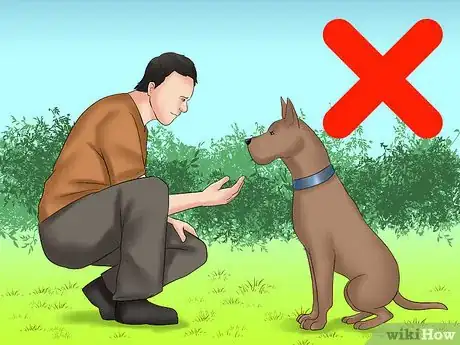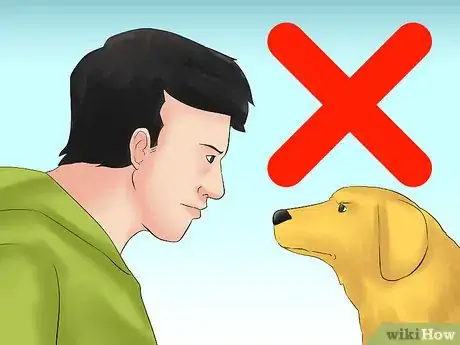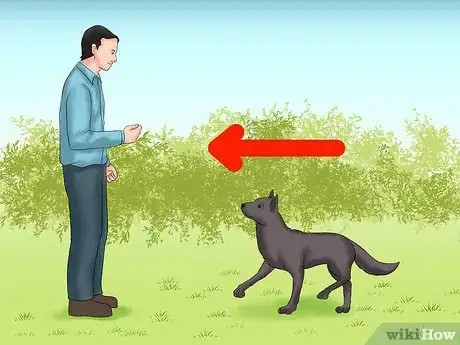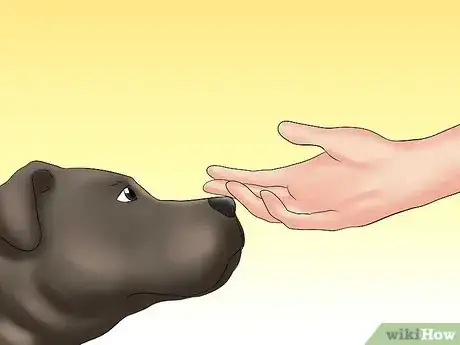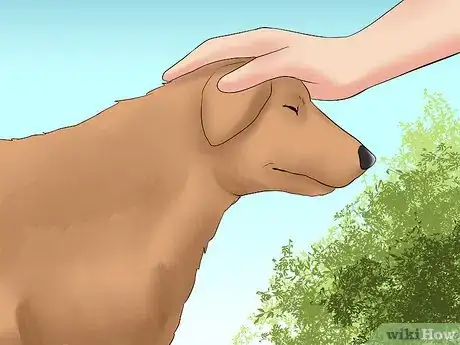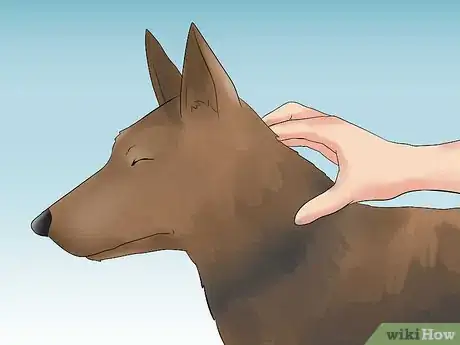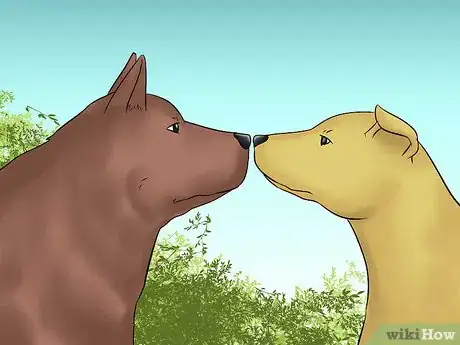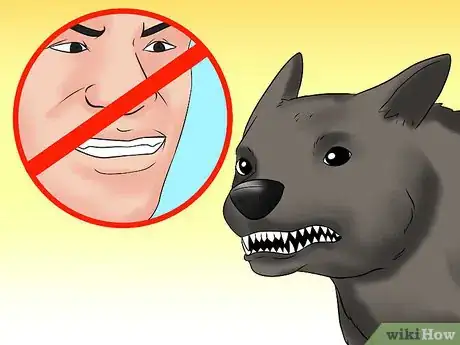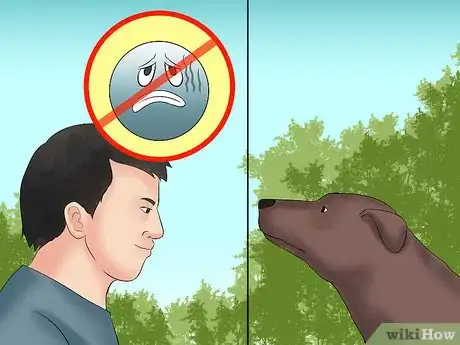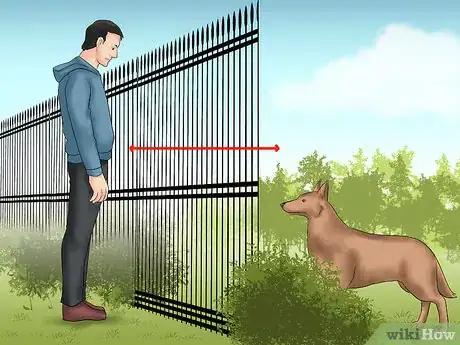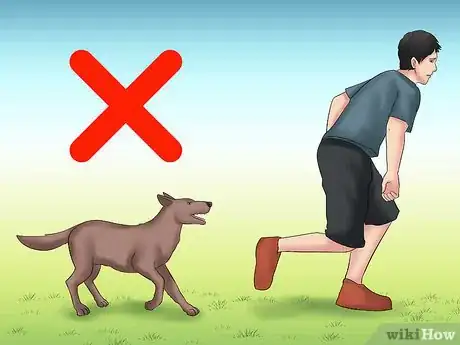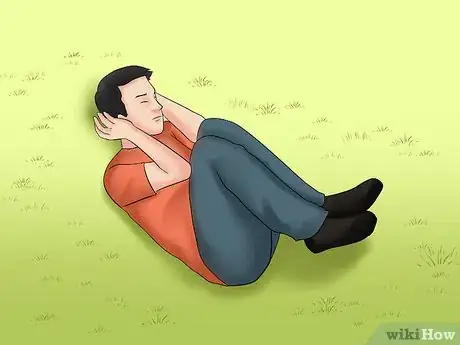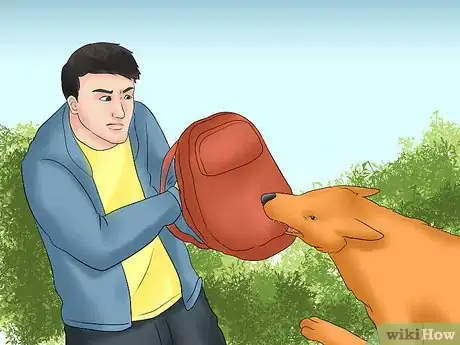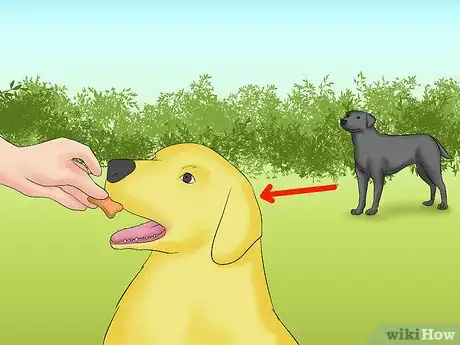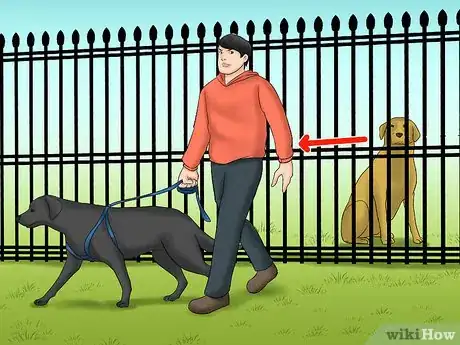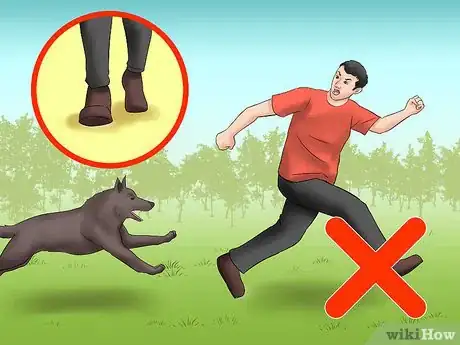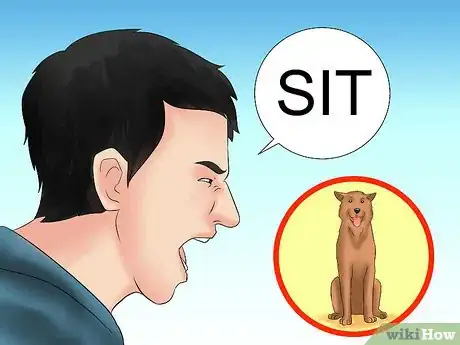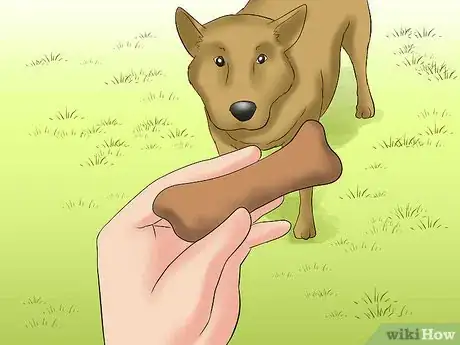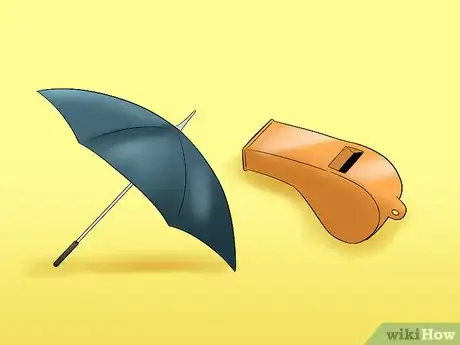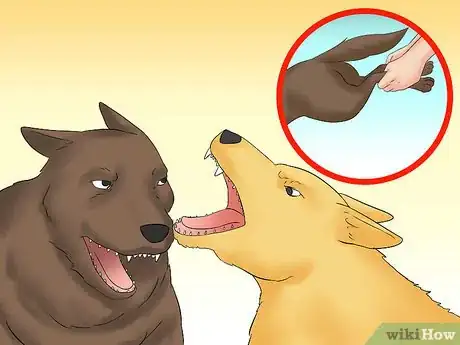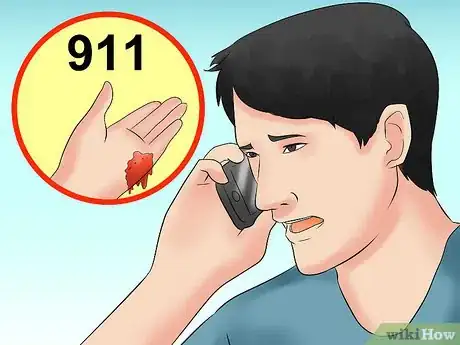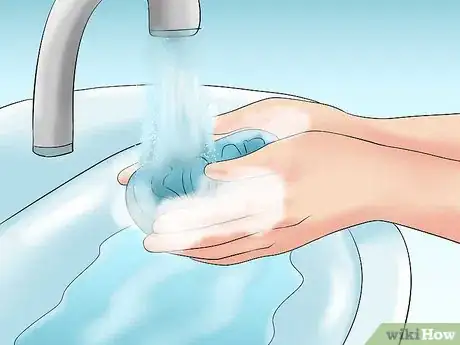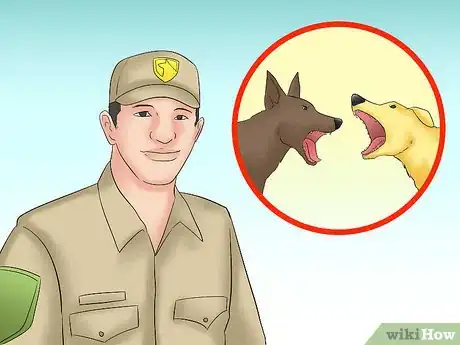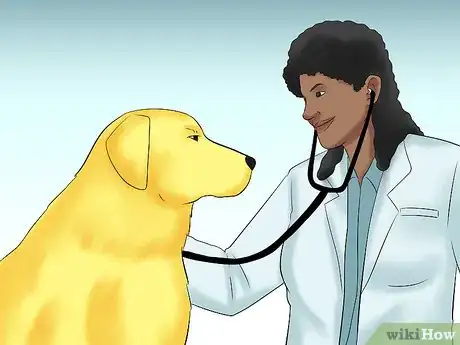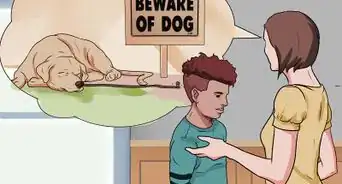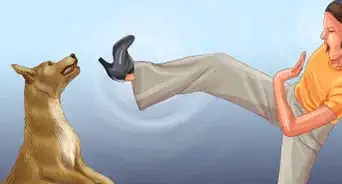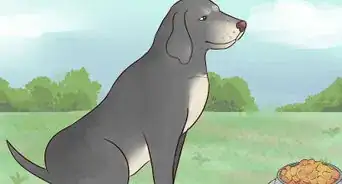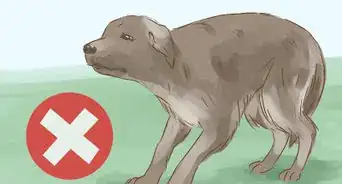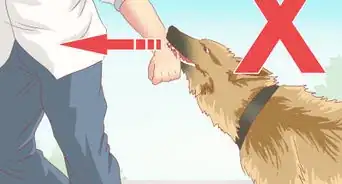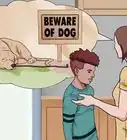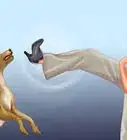This article was co-authored by Colleen Demling-Riley, CPDT-KA, CBCC-KA, CDBC. Colleen Demling-Riley (CPDT-KA, CBCC-KA, CDBC) is a Canine Behavior Consultant and the Founder of Pawtopia Dog Training. With more than 20 years of experience, she specializes in creating and customizing dog management programs for dog owners. She is a Certified Pet Dog Trainer-Knowledge Assessed, Certified Behavior Consultant Canine-Knowledge Assessed, Certified Dog Behavior Consultant, and American Kennel Club Canine Good Citizen Evaluator. Colleen is a member of the International Association of Canine Professionals and has been a featured expert in national media including the New York Times, Woman’s Day, Readers Digest, Cosmopolitan, and Yahoo.com.
There are 14 references cited in this article, which can be found at the bottom of the page.
This article has been viewed 17,652 times.
When you see an approaching dog, you need to make a quick judgment. If you see a dog with its owner, you can get the owner's permission to pet it and then approach it in an appropriate manner. However, a dog on its own can be a threat, and if you notice signs of aggression, you should take steps to get you and/or your dog out of there. If you do end up with a dog bite, you'll need to take steps to treat it.
Steps
Greeting a Dog
-
1Ask the owner first. Don't try to greet a dog that's not on a leash and with its owner. You know nothing about the dog, so you can't be sure whether it's aggressive or not. When a dog is with its owner, you have a chance to ask if it's okay to approach.[1]
- The owner may have a good reason for not wanting you to approach. For instance, the dog may not be comfortable around strangers.
-
2Don't look the dog in the eye. Looking a dog in the eye is a sign of aggression. Therefore, if you're trying to keep an interaction friendly, skip looking it in the eye. Focus on the dog's owner. You can also look further down, like at the dog's paws.
- Also, don't smile, as that looks like you're showing your teeth, a sign of aggression.[2]
Advertisement -
3Let the dog come to you. If you move towards it, the dog may take that as a sign of aggression. Instead, stop and let the dog move towards you. It lets the dog feel more in control, which makes the dog more comfortable.[3]
-
4Give the dog a chance to smell you. Keep your hand at your side and allow the dog to make contact. Do not attempt to reach out to them. Calmly praise the dog as it approaches so the dog understands that you are not a threat.
-
5Watch for the approval from the dog. The dog will let you know if it's okay to take the interaction farther. If it approves, it may move a little towards you. It may also bend its head down so you can pet it or wag its tail.[4]
- On the other hand, if its ears go back or he growls, let the dog be. Backing up or cowering is also a bad sign from the dog.
-
6Keep your petting away from bad areas. Dogs are sensitive about certain areas, like their stomachs and paws. Pet the dog on the back of the neck or shoulders, not the head. The chest is also fine for petting, as long as you approach gently with an open hand.
- If the dog shifts out of your reach a little or steps back, the petting session is over.
-
7Let your dog greet another dog. If your dog is with you and the dog appears friendly, you can encourage an encounter by letting them arch around each other sideways while you keep the leash somewhat slack. They will likely sniff each other. You do want to be able to pull the leash back if you need to. Once they greet each other, both will probably be ready to move on.
- Watch for the dogs getting angry or aggressive. If either dog gets stiff or stands up taller, you should pull your dog away. Also look for flat ears, growling, or bared teeth.
Avoiding an Aggressive Dog
-
1Look for signs of aggressiveness. Often, dogs greet each other from the side when they're not on a leash, rather than from the front. Watch for dogs who are running straight at you and looking you in the eye. That's a good time to start moving away, as it's more likely to be aggressive.[5]
-
2Don't make eye contact. Because looking the dog in the eye is an invitation to fight, try not to stare an advancing dog down. You may want to give a nervous smile, but that's also a bad idea. If you show your teeth, that is dog language for aggression.[6]
-
3Try not to be afraid. While it can be difficult to do when an aggressive-looking dog is coming your way, it's important to not be afraid. Dogs can sense when you're afraid, and they will use that as an opportunity to attack.
-
4Put distance between you and the dog if possible. Move across the street in a steady walk. Also, try to put physical objects between you and the dog, such as cars, light poles, fences, or trees. Sometimes, that will distract a dog.[7]
-
5Stand still if the dog is too close. If a dog jumps out at you, try standing still with your limbs tucked closely to your body. Running at this point will only encourage the dog to chase you, and most dogs won't attack when you hold your ground. If you notice the dog start to back up, take a step towards it to encourage it to move on.[8]
- Try to stay quiet while standing still.
-
6Curl up. If you're on the ground, your best option is to curl up into a ball. Make sure to protect your head with your arms. Pull something over you if you can, like a jacket. Also, make sure your fingers aren't sticking out because they make easy targets.[9]
-
7Protect yourself with a shield. If the dog bites, your first instinct is to pull back. However, that will just make the dog more aggressive. Instead, try to protect that area with something like clothing, a bag, or a purse. Don't be aggressive back, as that eggs the dog on.[10]
Stopping a Bad Interaction With Your Dog
-
1Try to move your dog away. If a dog is coming at you and your dog looking like it might want an interaction or a fight, you should try to get you and your dog out of the way. The best way to do that is to distract your dog with treats, which is why it's important to carry treats with you when you're out and about with your dog. Hold the treats up for your dog to see, making sure to get in its line of sight. If you need to, reward your dog with a treat every step or two to keep the focus on you.[11]
-
2Move out of the way. The best thing to do with an aggressive dog, particularly if you have your dog with you, is to get away from it if possible. Walk quickly to a place that hides you, such as a car or even a fence. If you can get out of the dog's line of sight, you're better off.[12]
-
3Don't run. Running will encourage the dog to come after you. It'll think it's time for a chase. Therefore, just try to walk in a quick and determined manner. Jogging may also encourage the dog to come after you and your dog.[13]
-
4Put the focus on yourself. If you can't get enough distance between you and the approaching dog to be on the safe side, you'll need to stand your ground. Get your dog to sit and then step between your dog and the approaching dog. Hold your hand out, and say a command like "stop" or "sit" in a loud, deep voice. Use a common command, as the dog is more likely to respond.[14]
-
5Distract the dog with treats. If the dog stops at all, throw some treats in its direction. Often, the dog will stop to hunt around for the treats, giving you a break in the action. Use the opportunity to take yourself and your dog away from the situation.[15]
-
6Consider carrying a distraction tool with you. You can use things like air horns, loud whistles, and even umbrellas to distract a dog from attacking. The first two rely on noise to distract the dog. Opening up an umbrella in the dog's direction can scare it enough to make it back away.[16]
-
7Don't put yourself in the middle of a fight. If you try to get between two dogs who are gearing up for a fight, you could find yourself with a serious injury.[17] Getting yourself injured is no way to save your dog because then you have to deal with treating your own wound.[18]
- The best way to break up a dogfight is to find someone to help you. Each of you should grab a dog by the back legs, lifting up and pulling back to remove them from the fight.[19] Try to move the dogs as far away from each other as possible. If you can only do one dog, pick the one that's being the most aggressive.[20]
Dealing With a Dog Bite
-
1Call an ambulance. If you are bleeding a lot, it's best to call 911. It's better to be safe than sorry when it comes to something like a dog wound. The ER doctors will be able to assess if you need stitches and/or antibiotics to treat the wound.[21]
-
2Clean the wound. If the wound isn't too serious, you can try cleaning it at home. Make sure to wash it out with soap and water. You can then apply antibiotic ointment and cover it with a bandage. However, if you notice deep puncture wounds, you should see a doctor.[22]
- Other bad signs that may show up or develop in the following couple of days include swelling, redness, and increasing pain. If you notice these signs, you should see your doctor.[23]
-
3Call animal control about the dog fight. All dog fights or attacks should be reported to authorities. Make sure you have a description of the dog. You'll also need to give a general location of the dog, as well as what happened with you or your dog.[24]
-
4Get your dog checked out. If your dog is in altercation, it's best to take it to the vet for an exam. You may not be able to find wounds under the fur, and they could develop into serious infections. Your vet is better equipped to handle it.[25]
Expert Q&A
-
QuestionWhat does tail wagging indicate?
 Colleen Demling-Riley, CPDT-KA, CBCC-KA, CDBCColleen Demling-Riley (CPDT-KA, CBCC-KA, CDBC) is a Canine Behavior Consultant and the Founder of Pawtopia Dog Training. With more than 20 years of experience, she specializes in creating and customizing dog management programs for dog owners. She is a Certified Pet Dog Trainer-Knowledge Assessed, Certified Behavior Consultant Canine-Knowledge Assessed, Certified Dog Behavior Consultant, and American Kennel Club Canine Good Citizen Evaluator. Colleen is a member of the International Association of Canine Professionals and has been a featured expert in national media including the New York Times, Woman’s Day, Readers Digest, Cosmopolitan, and Yahoo.com.
Colleen Demling-Riley, CPDT-KA, CBCC-KA, CDBCColleen Demling-Riley (CPDT-KA, CBCC-KA, CDBC) is a Canine Behavior Consultant and the Founder of Pawtopia Dog Training. With more than 20 years of experience, she specializes in creating and customizing dog management programs for dog owners. She is a Certified Pet Dog Trainer-Knowledge Assessed, Certified Behavior Consultant Canine-Knowledge Assessed, Certified Dog Behavior Consultant, and American Kennel Club Canine Good Citizen Evaluator. Colleen is a member of the International Association of Canine Professionals and has been a featured expert in national media including the New York Times, Woman’s Day, Readers Digest, Cosmopolitan, and Yahoo.com.
Canine Behavior Consultant A common myth is that a wagging tail is a happy tail. Dogs wag their tails for a variety of reasons, and will wag them right before aggression. So, if a strange dog approaches and their tail is wagging, don't assume that they're being friendly.
A common myth is that a wagging tail is a happy tail. Dogs wag their tails for a variety of reasons, and will wag them right before aggression. So, if a strange dog approaches and their tail is wagging, don't assume that they're being friendly. -
QuestionHow do you tell a dog you aren't a threat?
 Colleen Demling-Riley, CPDT-KA, CBCC-KA, CDBCColleen Demling-Riley (CPDT-KA, CBCC-KA, CDBC) is a Canine Behavior Consultant and the Founder of Pawtopia Dog Training. With more than 20 years of experience, she specializes in creating and customizing dog management programs for dog owners. She is a Certified Pet Dog Trainer-Knowledge Assessed, Certified Behavior Consultant Canine-Knowledge Assessed, Certified Dog Behavior Consultant, and American Kennel Club Canine Good Citizen Evaluator. Colleen is a member of the International Association of Canine Professionals and has been a featured expert in national media including the New York Times, Woman’s Day, Readers Digest, Cosmopolitan, and Yahoo.com.
Colleen Demling-Riley, CPDT-KA, CBCC-KA, CDBCColleen Demling-Riley (CPDT-KA, CBCC-KA, CDBC) is a Canine Behavior Consultant and the Founder of Pawtopia Dog Training. With more than 20 years of experience, she specializes in creating and customizing dog management programs for dog owners. She is a Certified Pet Dog Trainer-Knowledge Assessed, Certified Behavior Consultant Canine-Knowledge Assessed, Certified Dog Behavior Consultant, and American Kennel Club Canine Good Citizen Evaluator. Colleen is a member of the International Association of Canine Professionals and has been a featured expert in national media including the New York Times, Woman’s Day, Readers Digest, Cosmopolitan, and Yahoo.com.
Canine Behavior Consultant Turn at a 90-degree angle away from the dog so you aren't directly facing them or making eye contact. You can also talk to the dog in a very soothing but authoritative voice to get the message across.
Turn at a 90-degree angle away from the dog so you aren't directly facing them or making eye contact. You can also talk to the dog in a very soothing but authoritative voice to get the message across.
References
- ↑ http://www.cbsnews.com/news/if-aggressive-dog-threatens-you-know-what-to-do/
- ↑ http://www.cbsnews.com/news/if-aggressive-dog-threatens-you-know-what-to-do/
- ↑ Colleen Demling-Riley, CPDT-KA, CBCC-KA, CDBC. Canine Behavior Consultant. Expert Interview. 25 March 2022.
- ↑ http://www.cbsnews.com/news/if-aggressive-dog-threatens-you-know-what-to-do/
- ↑ https://www.animalhumanesociety.org/training/managing-leash-reactive-dog
- ↑ http://www.cbsnews.com/news/if-aggressive-dog-threatens-you-know-what-to-do/
- ↑ http://www.vetstreet.com/our-pet-experts/managing-confrontation-with-an-off-leash-dog
- ↑ http://www.pethealthnetwork.com/dog-health/dog-behavior/what-do-if-a-dog-attacks-you
- ↑ http://www.cbsnews.com/news/if-aggressive-dog-threatens-you-know-what-to-do/
- ↑ http://www.cbsnews.com/news/if-aggressive-dog-threatens-you-know-what-to-do/
- ↑ http://www.vetstreet.com/our-pet-experts/managing-confrontation-with-an-off-leash-dog
- ↑ http://www.vetstreet.com/our-pet-experts/managing-confrontation-with-an-off-leash-dog
- ↑ http://www.vetstreet.com/our-pet-experts/managing-confrontation-with-an-off-leash-dog
- ↑ http://www.vetstreet.com/our-pet-experts/managing-confrontation-with-an-off-leash-dog
- ↑ http://www.patriciamcconnell.com/theotherendoftheleash/it-works-how-to-stop-an-approaching-dog-in-an-emergency
- ↑ http://www.vetstreet.com/our-pet-experts/managing-confrontation-with-an-off-leash-dog?page=2
- ↑ Colleen Demling-Riley, CPDT-KA, CBCC-KA, CDBC. Canine Behavior Consultant. Expert Interview. 25 March 2022.
- ↑ http://www.vetstreet.com/our-pet-experts/managing-confrontation-with-an-off-leash-dog
- ↑ Colleen Demling-Riley, CPDT-KA, CBCC-KA, CDBC. Canine Behavior Consultant. Expert Interview. 25 March 2022.
- ↑ http://www.vetstreet.com/our-pet-experts/managing-confrontation-with-an-off-leash-dog?page=2
- ↑ http://www.cbsnews.com/news/if-aggressive-dog-threatens-you-know-what-to-do/
- ↑ http://www.cbsnews.com/news/if-aggressive-dog-threatens-you-know-what-to-do/
- ↑ http://www.cbsnews.com/news/if-aggressive-dog-threatens-you-know-what-to-do/
- ↑ http://www.vetstreet.com/our-pet-experts/managing-confrontation-with-an-off-leash-dog?page=2
- ↑ http://www.vetstreet.com/our-pet-experts/managing-confrontation-with-an-off-leash-dog?page=2
About This Article
To handle an approaching dog, don't smile at it or look it in the eyes, since some dogs may take this as a sign of aggression. If the dog's owner is with it, keep your eyes on them instead, and get their approval to greet their dog before you try petting it. Then, let the dog come to you, so it feels comfortable and in control of the situation, and offer it your hand to sniff. The dog may move a little toward you, bend its head to be pet, or wag its tail if it approves of you. However, if it growls or if its ears go back, leave it alone, but don't let it see that you're afraid or it may use that as an opportunity to attack. For more tips from our Veterinary co-author, including how to stop a bad interaction with a dog, scroll down.
